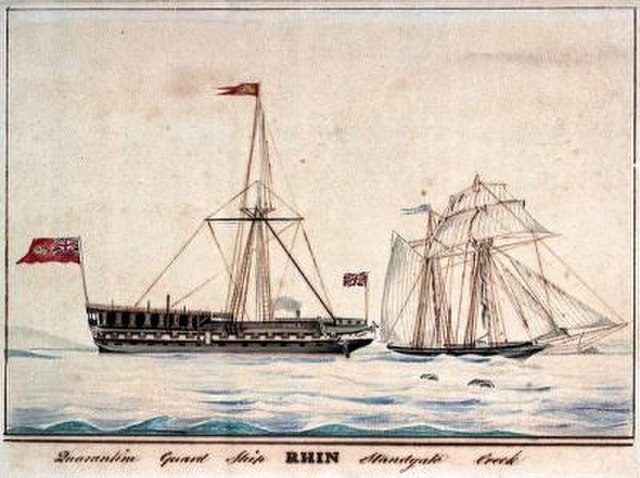A lazaretto, sometimes lazaret or lazarette, is a quarantine station for maritime travelers. Lazarets can be ships permanently at anchor, isolated islands, or mainland buildings. In some lazarets, postal items were also disinfected, usually by fumigation. This practice was still being done as late as 1936, albeit in rare cases.
Principal entrance to the lazaretto on Mahón
Lazzaretto of Manoel Island, Malta
The wall at the quarantine station of Odderøya, intended to keep locals away from the plague sick.
The lazaretto at the historic Columbia River Quarantine Station near Knappton, Washington, US
A quarantine is a restriction on the movement of people, animals and goods which is intended to prevent the spread of disease or pests. It is often used in connection to disease and illness, preventing the movement of those who may have been exposed to a communicable disease, yet do not have a confirmed medical diagnosis. It is distinct from medical isolation, in which those confirmed to be infected with a communicable disease are isolated from the healthy population. Quarantine considerations are often one aspect of border control.
US President Richard Nixon greeting the Apollo 11 astronauts in NASA's mobile quarantine facility
The quarantine ship Rhin, at large in Sheerness. Source: National Maritime Museum of Greenwich, London
Isolating a village in Romania whose inhabitants believe that doctors poison those suspected of cholera (1911)
The quarantine hospital building (lazaretto) at the historic Columbia River Quarantine Station near Knappton, Washington







